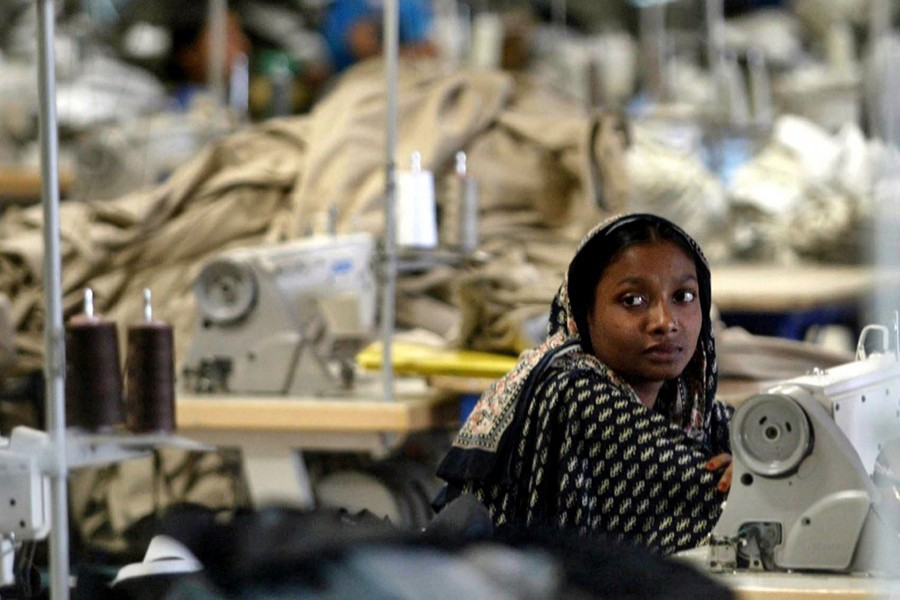The country's local garment factories those meet mainly domestic demand are running without rules and regulations, often violating workers' rights severely, according to a new study.
More than half of the workers employed in those facilities are below 18 years, it says, while majority of the total employees are deprived of benefits like formal agreement, standard working hours and structured wage rate.
The findings of a baseline study titled 'Countrywide Downstream Garment Industry in Bangladesh' were revealed at a roundtable discussion at the National Press Club, organised by Bangladesh Labour Welfare Foundation (BLF) Wednesday.
Inspector General (IG) of the Department of Inspection for Factories and Establishment (DIFE) Md. Shamsuzzaman Bhuiyan attended the meeting as the chief guest while president of Bangladesh Jatiya Sramik League Sukur Mahmud attended as the special guest.
BLF Chairman Abdus Salam Khan presided over the discussion, moderated by its secretary general Z M Kamrul Anam. Researcher A M Rasheduzzaman Khan presented the study findings.
The study was conducted in four regions -- Keraniganj (Dhaka), Narayanganj, Saidpur (Nilphamari) and Chittagong. There are 8,500 local apparel manufacturing facilities in Keraniganj, 1,081 in Narayanganj, 592 in Chittagong and 954 in Saidpur.
It said a total of 64,897 establishments were operating in the country.
The downstream readymade garments (RMG) factories use various inputs including from local sources and, leftover fabrics and accessories of the export-oriented RMG factories. Usually run by 5-50 workers, these factories manufacture wide range of products to cater to the demand in price-sensitive market segments.
Usually the overall atmosphere, security, safety and sanitation issues are overlooked by the factory owners, according to it.
The study also found that 52 per cent of the workers in those factories are child labourers while 33.6 per cent male aged between 15 and 17 years. Boys aged below 14 years comprise 7.3 per cent of total employment. Girls aged between 15 and 17 years comprise 10 per cent of the total workers.
No worker at the local garment factories enjoys the institutional practice like contract agreement, standard wage rate, regular working hours, identity card and casual leave.
Only 1.0 per cent of the workers enjoy annual leave while 24 per cent enjoy weekly rest.Around 97 per cent of the female workers enjoy maternity leave. Even, 99 per cent of the workers do not have annual leave and 80 per cent do not have festival leaves.
More than half (57.80 per cent) of the workers get their wages based on piece rate.
The study said there was no trade union in the surveyed apparel hubs, except Keraniganj, though a union is a vital platform for safeguarding the workers' interests.
The study recommended the government to recognise the local garments factories as an industry for ensuring the workers' rights and workplace safety.
Speaking on the occasion, Shamsuzzaman Bhuiyan said that these factories were operating under no formal rules and regulations.
"We shall have to shut each of the factories, if we apply the existing labour law," he said.
Children below 14 years are in no way allowed to work in a factory, said Mr Zaman, adding that a huge number of young people were working at those facilities.


